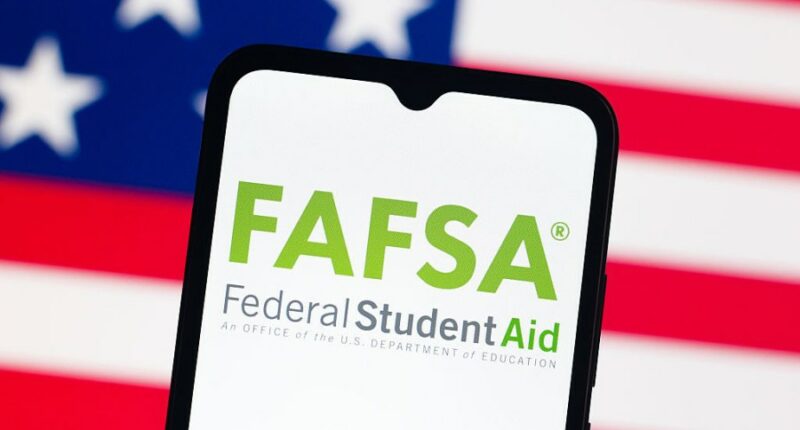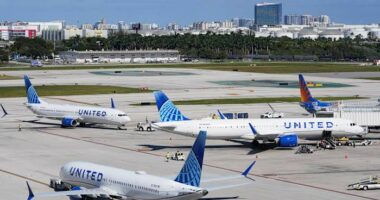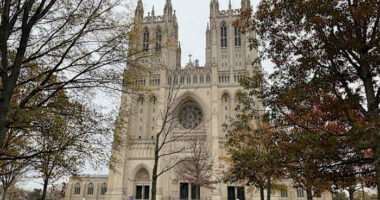Share this @internewscast.com

(The Hill) — The Trump administration’s early release of the Free Application for Federal Student Aid (FAFSA) forms might have offered a beneficial start for the process, historically plagued with issues, even amidst the ongoing government shutdown.
The FAFSA forms were made available last Wednesday, preceding their Oct. 1 deadline by a week. In the previous cycles, the forms underwent alterations and missed their expected release dates, leading to confusion for both students and educational institutions.
“It’s very positive. In this scenario, the absence of complaints is indeed a good sign, since our members typically notify us swiftly if there’s a problem. In recent years, any significant disruptions with the FAFSA were reported to us immediately by our vigilant members,” commented Sarah Austin, a policy analyst at the National Association of Student Financial Aid Administrators.
“Therefore, the fact that we haven’t received negative feedback is encouraging, and we’re optimistic that it indicates everything is functioning as planned,” Austin further elaborated.
The Trump administration revealed on Friday that 125,000 individuals have already initiated their applications, showing a promising start compared to past years.
Two years prior, the Biden administration simplified the FAFSA forms as per Congress’s requirement. Due to these changes, the forms were delayed, and students didn’t gain access until late December, deviating from the usual Oct. 1 release date.
After the forms were released, there were bugs and other issues that delayed a smooth implementation until March 2024. The delay caused colleges to push back decision days and ultimately caused a fall in applications.
For the next application cycle, the forms were again delayed to Dec. 1. While the rollout was much smoother and schools were able to make deadlines, advocates say every month matters in ensuring students can make proper plans for their higher education.
“Since now it’s open even before October 1, there will be more time for students and their families to complete the form … but we’re hoping to get back to really record high FAFSA completion rates. We’re off to a great start with that. The FAFSA opened actually in August in a beta capacity and has since opened to the general public,” said Catherine Brown, senior director of policy and advocacy for the National College Attainment Network (NCAN).
Along with the early rollout, there are two new aspects experts hope will help lead to increased completion rates of the FAFSA forms.
The first is that parents can now be invited to fill out their financial information on their student’s form through an email invitation. Previously, parents had to create a unique ID that could take days, and any mistakes took a long time to correct. This issue was one of the biggest reasons students previously would not complete the application, according to NCAN.
The second change is eliminating the multi-day wait for verifying a person’s Federal Student Aid ID account, making it so students can now complete the FAFSA in one sitting.
“We’re really optimistic about the process this year, and, I would add, they’ve made some improvements that are likely to make it much easier than last year for students and their families to complete the process,” Brown said.
“We’re pleased to see some students logging in already and filling out their FAFSA, and we’re very hopeful that this will be a record-breaking year in terms of FAFSA completions and Federal Student Aid allocations,” she added.
But a potential curveball has been thrown into the beginning of the FAFSA form application process with the shutdown of the federal government.
As of now, the Education Department has indicated FAFSA will not be affected, and students will still be able to reach customer service if problems arise. The forms will stay available, and completed applications will continue to be processed.
Advocates say they don’t expect the process to be disturbed unless an extended shutdown occurs. The longest federal government closure in the past several decades was 35 days, under President Donald Trump’s first term.
“If any sort of issues arise, would be our concern, or if it’s a prolonged shutdown,” that’s when problems could hit FAFSA, Austin said.
“But, at this point in time, it seems like everything should still be working properly, and the customer service should be available to applicants. So, I don’t think at this point we’re worried about that,” she added.













